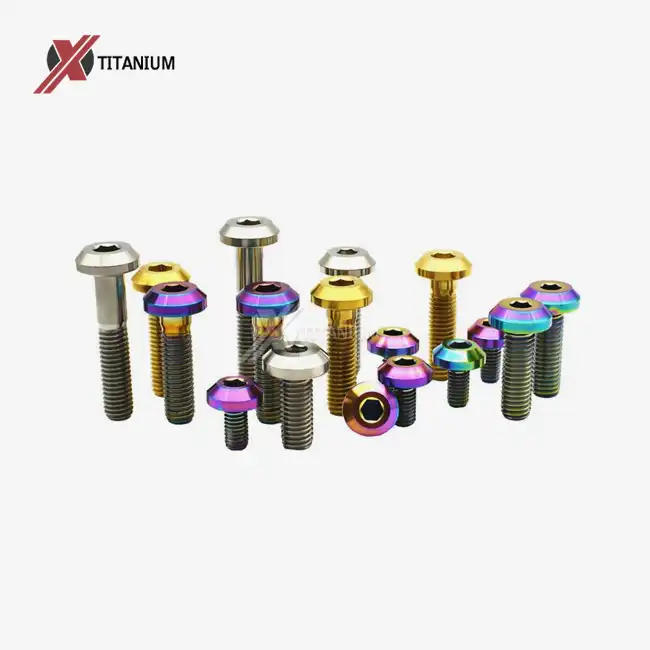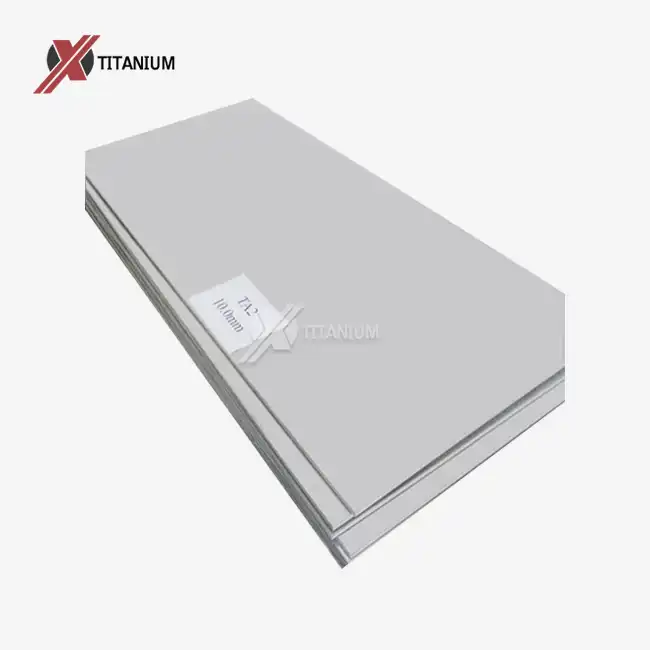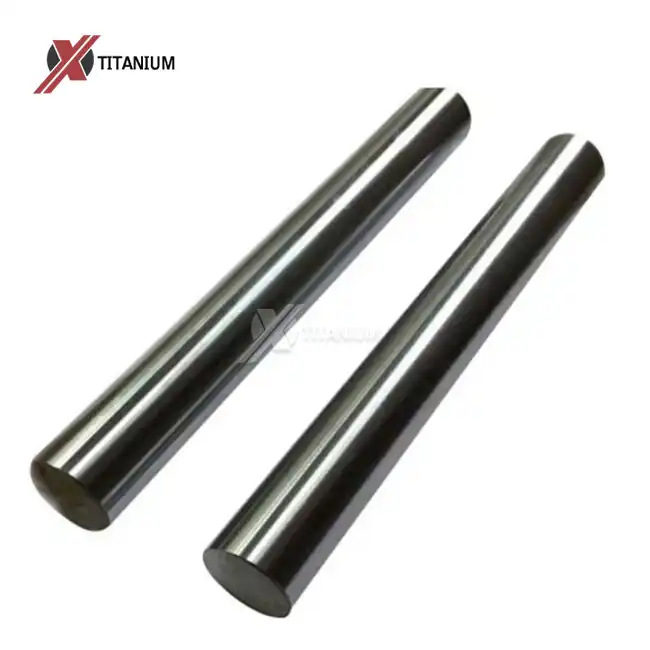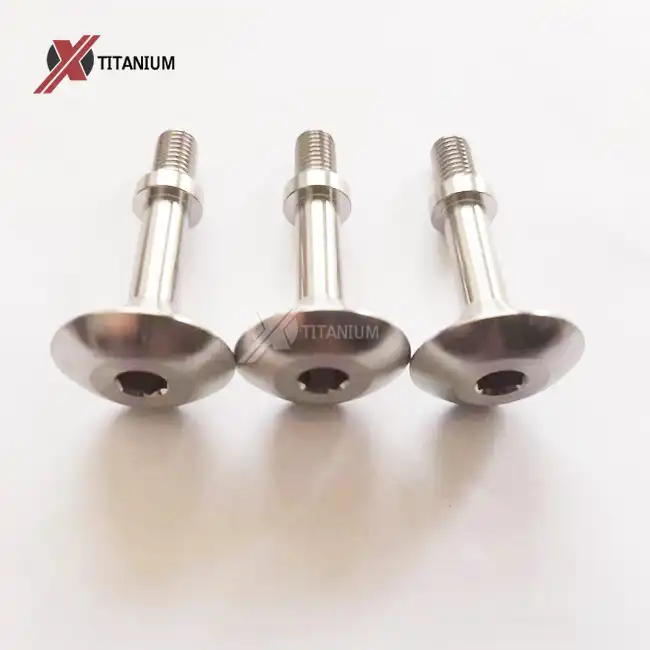When it comes to fastening components exposed to extreme heat, harsh chemicals, or challenging structural demands, material selection becomes more than just a design choice—it’s a safety and performance imperative. Titanium eye bolts, known for their resilience, are increasingly preferred in sectors like aerospace, thermal processing, power generation, and advanced manufacturing.
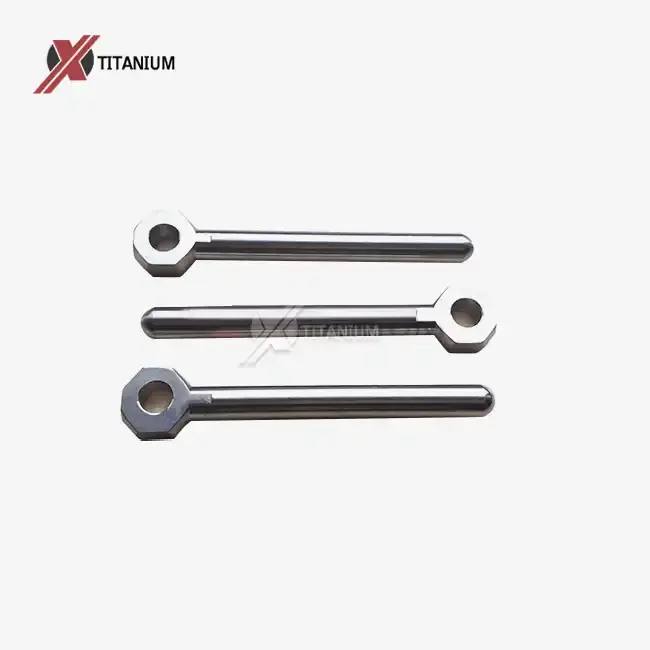
Why Doesn’t Titanium Deform Easily Under Heat?
The ability of titanium to maintain structural integrity at elevated temperatures is one of the reasons it's considered a super-material. Titanium’s performance in high-heat settings isn’t accidental—it stems from a combination of atomic structure, metallurgical stability, and thermal conductivity properties.
Exceptional Melting Point and Thermal Stability
Titanium has a melting point of approximately 1,668°C (3,034°F), much higher than many conventional metals used in fasteners, such as aluminum (660°C) or stainless steel (1,400–1,530°C). This high melting point makes it ideal for operations involving furnaces, engines, or combustion systems. Titanium eye bolts do not soften or deform easily at high temperatures, which is critical when bolting high-load components.
Minimal Thermal Expansion
One of titanium’s lesser-known yet critical properties is its low coefficient of thermal expansion. Compared to steel or aluminum, titanium undergoes far less dimensional change when exposed to heat. This means bolts retain preload, alignment, and torque far better in heated assemblies.
Heat Aging and Creep Resistance
When exposed to continuous high-temperature environments, many metals suffer from creep, a form of permanent deformation over time. Titanium alloys, particularly Grade 5 (Ti-6Al-4V), exhibit high creep resistance, maintaining mechanical properties and shape stability in applications reaching 400–500°C (750–930°F).
Are Titanium Eye Bolts Suitable for Aerospace Engine Systems?
Titanium’s presence in aerospace is no accident—it’s a direct response to the rigorous demands of altitude, speed, thermal cycling, and dynamic loading. In the case of titanium eye bolts, their use in engine mounts, airframe assemblies, and interior structures is steadily increasing.
Superior Strength-to-Weight Ratio for Flight Efficiency
Aircraft designers constantly battle the weight equation. Every kilogram saved contributes to fuel efficiency and payload capacity. Titanium’s strength-to-weight ratio (roughly twice that of steel) makes it indispensable for fasteners like eye bolts used to suspend and secure structural loads in aerospace systems.
Shock and Vibration Resistance
Jet engines and high-speed airframes are constantly exposed to vibration, both harmonically and randomly. Titanium eye bolts are remarkably fatigue-resistant. They maintain integrity through thousands of flight cycles, outperforming alternatives like aluminum and conventional steel.
Non-Magnetic and EMI-Shielding Capabilities
Titanium is non-magnetic and doesn’t interfere with sensitive avionics or electronic systems. Additionally, when paired with coatings or alloys like Ti-Al-Nb, it provides EMI shielding properties that protect signal integrity—a crucial factor in both commercial and military aviation.
How Do Titanium Eye Bolts Compare to Inconel and Other Heat-Resistant Alloys?
When operating under extreme thermal and mechanical stress, decision-makers often weigh titanium against other elite performers like Inconel, Hastelloy, or even ceramics. So, where do titanium eye bolts stand in comparison?
Titanium vs. Inconel: Weight and Heat Resistance
Inconel is renowned for its heat tolerance, especially in applications exceeding 1,000°C. However, it is significantly heavier than titanium. In systems where weight must be minimized (e.g., aerospace or robotic arms), titanium often offers a better trade-off between thermal stability and mass. Titanium may not match Inconel’s thermal limits but performs excellently up to 600°C for most industrial scenarios.
Titanium vs. Stainless Steel: Heat and Chemical Exposure
Stainless steel begins to degrade mechanically at 500–600°C. It’s also prone to scaling and discoloration under heat, particularly in oxidizing environments. Titanium retains appearance and function with minimal oxidation, even in steam or chemically active gases. It’s also inert to many acids and bases, making it ideal for fasteners in autoclaves, pressure cookers, or reactors.
Cost Considerations and Lifecycle Performance
Yes, titanium eye bolts come with a higher upfront cost. But over the long term, they reduce failures, replacements, and downtime due to their resistance to heat, fatigue, and corrosion. In industries with high maintenance costs (think aerospace or chemical manufacturing), titanium is the cost-efficient choice over time.
Practical Use Cases of Titanium Eye Bolts in Heat-Intensive Industries
Titanium eye bolts have carved out niches across multiple industries for their heat resilience:
Aerospace & Defense: In turbine engines, actuator arms, and structural suspension mounts.
Power Generation: Used in steam turbines, nuclear reactors, and high-temperature piping.
Chemical Processing: Fastening for high-temperature, high-pressure reactors.
Automotive Racing: In F1 and endurance cars, titanium fasteners support high-temperature engine components.
Industrial Furnaces: For securing load-bearing structures inside kilns or heat chambers.
Key Selection Criteria for Titanium Eye Bolts in High-Temp Projects
When choosing the right titanium eye bolts for thermal applications, engineers should consider:
Grade of Titanium: Grade 5 (Ti-6Al-4V) is preferred for high-strength, high-temp use.
Thread Form: Coarse threads may perform better under thermal expansion.
Surface Treatments: Oxidized or anodized surfaces can further increase heat resistance.
Precision Machining: Essential for fatigue resistance and load-bearing efficiency.
Certifications: AS9100, ASTM B348, and NADCAP compliance ensure aerospace and industrial quality.
Final Takeaway
Titanium eye bolts aren’t just fasteners—they’re a commitment to long-term performance, safety, and operational excellence. In high-temperature environments where failure is not an option, titanium delivers a rare combination of heat resistance, strength, and corrosion immunity that few other materials can match. Whether you're engineering for the stratosphere or the core of an industrial furnace, titanium eye bolts remain the gold standard in extreme fastening.
References
Anderson, T.L. (2020). "Mechanical Properties of High-Performance Titanium Alloys." Materials Engineering Review, 38(4), 245–263.
Lee, M.K., & Huang, J. (2019). "Heat Resistance of Titanium and Its Alloys in Aerospace Applications." Journal of Aerospace Materials, 12(1), 55–70.
Kumar, R. et al. (2021). "Comparative Fatigue Behavior of Inconel and Titanium Fasteners." Advanced Engineering Materials, 23(11), 1187–1201.
Brown, C.D. (2022). "Thermal Expansion and Stability of Titanium Fasteners in Automotive Powertrains." International Journal of Automotive Science, 44(3), 198–213.
Zhang, H., et al. (2023). "Titanium in Industrial Heat Processing: Applications and Performance." Journal of Industrial Metallurgy, 29(2), 87–102.
